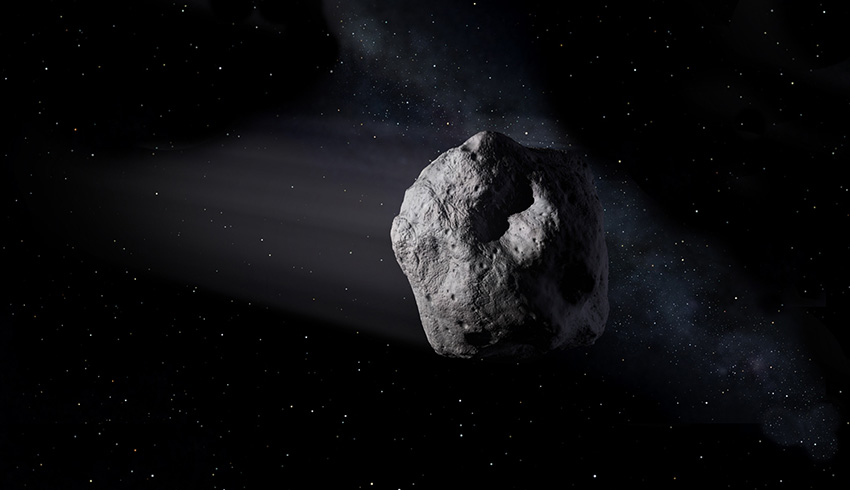The Japanese Hayabusa2 spacecraft successfully collected the samples from near-Earth asteroid 162173 Ryugu and is now preparing to return them to Earth in a capsule that will land in Australia on the Woomera defence test range in South Australia.
Successful return of the samples will be the culmination of an ambitious six-year mission that started in in December 2014.
Unlike most other space probes, this wasn’t a one-way mission, with Hayabusa2 returning with samples of the asteroid’s material.
First it spent more than a year orbiting the asteroid, conducting a range of scientific tasks, even deploying small hopping landers onto the asteroid surface.
However, scientists wanted a clearer idea of the asteroid’s internal composition, as the surface has been weathered through millennia of exposure to space radiation.
To collect internal material, Hayabusa2 fired a two-kilogram copper penetrator at the asteroid surface.
Before and after images released by the Japan Aerospace Exploration Agency (JAXA) in April show the 10-metre crater blasted by the two-kilogram copper penetrator at a speed around 7,000km/h.
Hayabusa2 itself briefly touched down twice to collect samples, most recently last month near the crater.
JAXA has already proved the return mission is entirely viable. The initial Hayabusa – Japanese for peregrine falcon – was launched in 2003, rendezvoused with asteroid 25143 Itokawa and returned seven years later with samples collected from the asteroid surface.
Asteroid 162173 Ryugu – Japanese for dragon palace – is what’s termed a near-Earth asteroid, a 900-metre-wide hunk of rock in a roughly eliptical orbit between the Earth and Mars.
It was discovered in 1999 and is of great interest because of its carbonaceous composition of materials dating from the formation of the solar system.
Among the earth stations tracking the Hayabusa2 mission is the Canberra Deep Space Communications Complex at Tidbinbilla, outside Canberra.
Hayabusa2 has already discovered some neat stuff.
The 900-metre-wide asteroid is actually shaped like a top with a prominent equatorial ridge.
Its surface was very dark, reflecting just over 2 per cent sunlight. The surface was studded with boulders – so many so many that the first sample-collection landing was delayed by four months while mission controllers looked for a safe landing site.
Japanese researchers have concluded that the asteroid is actually less massive than its size indicates, suggesting it might actually be porous and about 50 per cent empty space.
That would be consistent with the theory that the asteroid was formed from material ejected from a very hot parent body.

